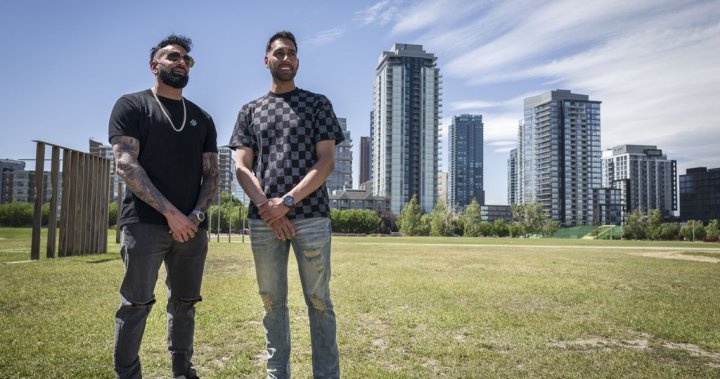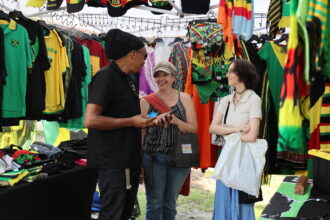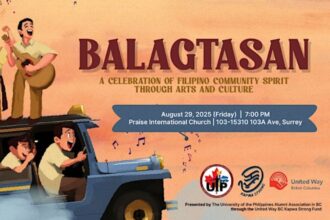The thunderous beat of dhol drums mingles with country music. Vibrant saris and salwar kameez flow alongside cowboy hats and boots. The aroma of butter chicken and samosas drifts through the air, complementing the familiar scent of pancakes and barbecue. This is not a scene from two separate celebrations, but rather the harmonious cultural fusion that has become the South Asian Mela at the Calgary Stampede.
For the second consecutive year, the Calgary Stampede has embraced diversity by hosting the South Asian Mela, transforming the iconic Canadian rodeo into a cross-cultural celebration that reflects the changing face of Western Canada. The Mela (festival) has quickly become one of the most anticipated additions to the 112-year-old Stampede, drawing thousands of attendees eager to experience this unique cultural blend.
“The Stampede has always been about community and celebration,” explains Gurpreet Singh, one of the event organizers. “The Mela simply expands that community to include the vibrant South Asian population that now calls Calgary home. It’s not about changing the Stampede—it’s about enriching it.”
This year’s Mela featured over 30 performances across two days, showcasing traditional dance forms like Bhangra and Kathak alongside contemporary Bollywood routines. The marketplace buzzed with vendors selling everything from hand-crafted jewelry to intricately embroidered textiles, while food stalls served up regional delicacies representing the diverse culinary traditions of India, Pakistan, Bangladesh, and Nepal.
The evolution of the Calgary Stampede to include such diverse cultural elements speaks volumes about Canada’s changing demographics. Calgary’s South Asian community has grown significantly over the past decade, with recent census data showing it’s now the city’s largest visible minority group. What’s particularly noteworthy is how this integration hasn’t diluted either tradition but rather created something uniquely Canadian.
“There’s something profoundly moving about watching a Bhangra performance with the rodeo grounds as a backdrop,” says cultural anthropologist Dr. Amrita Patel. “It’s not cultural appropriation—it’s cultural appreciation at its finest. Both traditions maintain their integrity while creating space for each other.”
The Mela’s success reflects a broader trend in Canadian cultural events, where traditional celebrations are evolving to reflect the country’s multicultural reality. What makes the Stampede’s approach particularly effective is that it doesn’t segregate the South Asian elements but integrates them throughout the festival grounds, encouraging cross-cultural mingling and discovery.
For many South Asian Calgarians, the Mela represents more than entertainment—it’s about belonging. “My parents immigrated here thirty years ago, but they never really felt connected to the Stampede,” shares local resident Anita Sharma. “Now they’re buying cowboy hats and bringing their friends. It’s like they finally feel invited to the party.”
The economic impact has been significant as well. The Mela has attracted visitors from across Canada and even internationally, with tourism officials noting an uptick in visitors specifically mentioning the South Asian events in their travel plans. Local businesses have responded by creating fusion products like “curry poutine” and “masala beef jerky,” blending culinary traditions in delightfully unexpected ways.
This cultural exchange flows both ways. Many first-time Stampede attendees from the South Asian community find themselves drawn to traditional rodeo events and western music after coming for the Mela. “I came for the Bollywood dance competition, but ended up staying for the chuck wagon races,” laughs engineering student Raj Patel. “Now I’m shopping for cowboy boots!”
What’s perhaps most remarkable about the Mela is how seamlessly it has been accepted by Stampede traditionalists. While cultural additions to longstanding traditions can sometimes face resistance, feedback has been overwhelmingly positive. The Stampede has maintained its core identity while demonstrating that traditions can evolve without losing their essence.
As I wandered through the grounds, watching families from different backgrounds sharing food, comparing outfits, and teaching each other dance moves, I couldn’t help but see the Mela as a microcosm of Canada at its best—a place where cultural traditions don’t compete but complement each other.
The Calgary Stampede South Asian Mela isn’t just a successful cultural event; it’s a powerful statement about how we can honor our diverse heritages while creating something new together. In a world often divided by cultural differences, this celebration reminds us that the most beautiful traditions are those that make room for everyone.
As the sun set over the Stampede grounds, with Bhangra dancers performing to a country music backdrop, one couldn’t help but wonder: Isn’t this evolving cultural tapestry precisely what makes Canadian identity so resilient and unique?
For more perspectives on cultural celebrations across Canada, visit our CO24 Culture section, or explore emerging social patterns in our CO24 Trends analysis.










